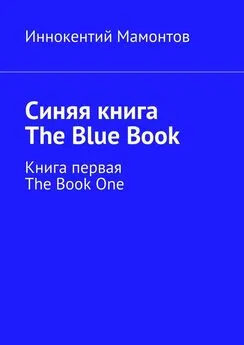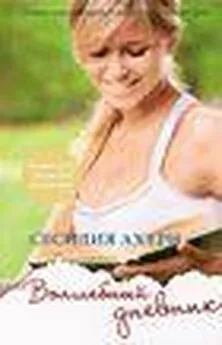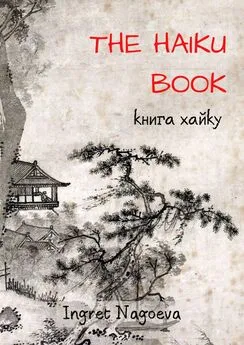Daniel Ingram - Mastering the Core Teachings of Buddha - An Unusually Hardcore Dharma Book
- Название:Mastering the Core Teachings of Buddha - An Unusually Hardcore Dharma Book
- Автор:
- Жанр:
- Издательство:Aeon Books
- Год:2009
- ISBN:9781904658405
- Рейтинг:
- Избранное:Добавить в избранное
-
Отзывы:
-
Ваша оценка:
Daniel Ingram - Mastering the Core Teachings of Buddha - An Unusually Hardcore Dharma Book краткое содержание
Mastering the Core Teachings of Buddha - An Unusually Hardcore Dharma Book - читать онлайн бесплатно полную версию (весь текст целиком)
Интервал:
Закладка:
On the other hand, if you want to significantly increase your chances of tasting the fruits of the path, do your best to make time for retreats in a way that honors your spiritual goals as well as your other commitments.
One of the reasons for monasticism is that your commitments become your practice, but there are plenty of people who have figured out how to live in the world and use retreats and strong daily practice to achieve the same effects. In fact, in this unusual time in history, there are plenty of places to sit for very little money and get great support for practice without having to deal with all the ritual, dogma and other hassles that are involed in ordination.
Some of my favorite places to go on retreat are: The Insight Meditation Society (IMS) in Barre, MA, Bhavana Society in Highview, West Virginia, The Malaysian Buddhist Meditation Centre (MBMC) in Penang, Malaysia, and Gaia House near Totnes, England. Also worth mentioning are the Mahasi centers in Burma (Myanmar), such as Panditarama in Yangon (formerly known as Rangoon). All of these are easy to find on the Internet. For those who are really into Mahasi Sayadaw style practice as I am, the Three Month Retreat at IMS (about $3000), or a few weeks to months at MBMC (about $1000 to fly there and then a few bucks a day plus donations to stay) are highly recommended. Both have excellent food and are very conducive to great practice. It is amazing the things we spend our time and money doing. As a good friend once said, “If you had to flip burgers for 13
years to get up the money to do the three month at IMS, it would be well worth it.” I prefer MBMC for cultural reasons, but both are great.
Burma is a great place to go for the real deal, but there are some issues around dealing with the government, the oily food, the culture, the 72
Practical Meditation Considerations
water, the heat, the parasites, and the malaria-carrying mosquitoes that need to be strongly considered.
POSTURES
The four postures for meditation that are mentioned in traditional Buddhist practice are those of sitting, walking, standing and reclining.
Each has its own set of benefits and drawbacks, and each may be useful at one time or another. Looked at another way, this means that we can meditate in just about any position we find ourselves. We can be aware of where we are, what we are doing, and what our experience feels like all day long. Which posture we choose doesn’t really matter from a pure insight point of view, but there are some practical reasons why we might choose one or the other for formal practice. Posture choice is mostly about finding one that works in our current circumstances and which matches our current energy level.
Reclining practice has the advantages of being extremely sustainable, not requiring attention to maintaining a posture, generally being relatively free from pain, and of really allowing the attention to turn to subtle sensations. It has the distinct disadvantage of quickly putting many people to sleep, and thus most people prefer sitting. A few people, such as myself, are so naturally wired that they can meditate clearly when reclining most of the time and may sometimes find sitting just a bit too intense and edgy. How one will react to the energetic quality of a posture varies with the individual, the phase of practice and practical considerations such as how much sleep we got the night before. It usually doesn’t take much experimentation to let us know if reclining will work for us or not.
Sitting is the classic meditation pose, but it is not so special as some would make it out to be. I will use the phrase “on the cushion” often in this book, but I do so because I find it catchy and not because there is something magical about the sitting posture. When I write “on the cushion,” I am really referring to formal meditation in any of these four postures.
Sitting has the quality of being more energy-producing than reclining and less energy-producing than walking and standing. It can also be very stable once we learn to sit well. However, many people find that learning to sit well is a whole endeavor in and of itself. There are lots of 73
Practical Meditation Considerations
postures even within the category of sitting, e.g. in a chair with our back off the backrest or with our back on the back rest, in lotus position, in half-lotus position, sitting “Indian Style” with our legs crossed, in the
“Burmese” or “friendly” position which is like the cross-legged position except that our feet are both on the floor one in front of the other, in a keeling position with or without a bench, etc.
Many traditions make a big deal about exactly how you should sit, with some getting particularly macho or picky about such things, but in the end it doesn’t matter so much. The things that seem to matter most are that you can sustain the posture, that your back be fairly straight so that you can breathe well, and that you are not permanently hurting yourself. Aches and pains are common in meditation, but if they persist for a long time after you get up from sitting, particularly in your knees, seriously consider modifying your sitting posture.
Standing is an even more energy-producing posture than sitting, with the obvious advantage being that is it even harder to fall asleep when standing than when sitting. It seems to up the intensity of a meditation session even more and can be useful when the energy is really low. I recommend standing with the eyes slightly open to avoid falling over, though some people can do just fine with their eyes closed. If you are sitting and finding that you simply cannot stay focused and awake, try standing.
Walking is the most energetically active of the four postures and also provides a nice stretch for the joints and back after we have been doing a lot of sitting. Its strengths are its weaknesses, in that the fact that one is moving around can make it easier to stay present and also lead to a lack of stable concentration. Some people consider walking practice to be very secondary to sitting, but I have learned from experience that walking meditation should be given just as much respect as sitting meditation. Whether we walk fast or slow is really not so important, but that while walking we investigate all the little sensations that go into walking is. This is a great time to check out intentions and their relationship to actions, as walking involves a complex and interesting interplay between these. If you are having problems staying grounded when walking, I recommend staying primarily with the physical 74
Practical Meditation Considerations
sensations in the feet and legs, particularly the sensations of contact between the feet and the ground or floor.
OBJECTS FOR INSIGHT PRACTICES
As mentioned before, there are lots of insight traditions and they each have their favorite objects. Whereas from the point of view of pure insight the object of meditation doesn’t matter, as with postures there are some other practical considerations related to our particular abilities and the current phase of our practice that are worth taking into account.
It should be noted here that no objects are inherently objects for insight practice versus concentration practice. The difference is whether or not we investigate the Three Characteristics of those objects or ignore the fact that the object is made up of individual sensations and thus artificially solidify it. Thus, you could use any of the objects mentioned below (as well as many others) for either type of practice.
The first question is whether or not one has a particular agenda for what kind of sensations or focus one wishes to include in the practice, i.e. whether one wants to do “choiceless awareness” practice or a more structured practice. Choiceless awareness practice, in which one investigates whatever arises without a more specific focus, has the advantage of being very inclusive and “natural,” and yet by the same token some people can easily get distracted and ungrounded when they don’t take a more structured approach.
For those taking a more structured approach, the axes one can move on are the degree to which one includes physical or mental sensations in meditation, whether or not one focuses narrowly or uses a more open field of attention, and whether or not one moves the attention around or keeps it in about the same place.
The primary advantage of trying to focus primarily on physical sensations, such as the breath, the sensations of walking, the points of contact with the floor, or the sensations of our physical body in general, is that they are much less seductive than mental sensations. Mental sensations tend to trap us in the content and stories, as anyone who has ever tried to meditate knows all to well. The more mental sensations we include in our practice, the more of our emotional and psychological stuff we will encounter. This can be a mixed blessing. If our practice is very strong, we can enter such territory and yet still see the true nature 75
Practical Meditation Considerations
of all of the sensations that make it up. If our practice is not very strong, we will simply be swamped, lost in the habitual patterns of thinking associated with our “stuff.”
Thus, physical sensations help us ground ourselves, and mental sensations open us up to plunging into the depths of mental life or getting lost in it. From a pure insight point of view, neither one is more holy or more of a source of truth. However, when we do the experiment we will quickly realize what works for us; “works” in this case meaning that we can keep seeing the true nature of the numerous quick sensations that make up our reality.
There are numerous other types of physical objects that may be investigated, including sounds, sights, and even smells and tastes. Some people have a natural proclivity for investigating the sensations of a particular sense door. There is a monk in Burma that recommends his students use the high-pitched tones in our ear as an object, and sometimes I have found them very useful and interesting. Rather than seeming to be a continuous tone, we can hear each little individual sensation of ringing as a discontinuous entity. We may also take sights as object, such as the colors on the back of our eyelids or, if our eyes are open, whatever visual sensations present themselves. These are also impermanent, and if we are good at this we may even see our visual world presenting itself like the frames of a movie.
Another consideration is whether to use a narrow or broad focus of attention. The advantage of a more narrow focus of attention is that it may exclude many distractions. We may get very good at seeing certain selected types of objects, such as the sensations of breathing in the abdomen or at the tip of the nose, and this is just fine and even a very good idea. Such one pointed practice is routinely recommended, and some people, such as myself, have a natural inclination towards this style.
Others find that this makes them too tight and irritable. However, they find that they do much better with a wider and more inclusive field of attention. These things vary with the person and the situation, and if we are honest with ourselves we will be able to know what is working for us and what is not. The advantage of a wide field of attention is that we need to put less effort into staying focused and can be more present to 76
Practical Meditation Considerations
whatever arises naturally. The downside is that we may become very lazy meditators and get lost in thought. These tradeoffs must be weighed against each other.
There are practices, such as body sweeping, that keep the attention moving all the time. This can be very helpful, as it keeps us engaged with new and interesting sensations and may keep us from getting into ruts of thinking that we are staying with new sensations when really we are just remembering old patterns. However, these practices have the downside that they can sometimes lack the real precision of honest attention that comes from staying with more restricted areas of focus.
Читать дальшеИнтервал:
Закладка:





![Дженнифер Гюнтер - The vagina book. Главная книга для тех, у кого есть этот орган [litres]](/books/1061538/dzhennifer-gyunter-the-vagina-book-glavnaya-kniga-dl.webp)




